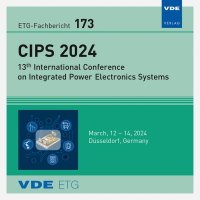Cu-Si3N4 AMB-substrates for circuit boards in power electronics
Konferenz: CIPS 2024 - 13th International Conference on Integrated Power Electronics Systems
12.03.2024-14.03.2024 in Düsseldorf, Germany
Tagungsband: ETG-Fb. 173: CIPS 2024
Seiten: 7Sprache: EnglischTyp: PDF
Autoren:
Rost, A.; Zschippang, E.; Mosch, S.; Gierth, P.; Schilm, J.; Herrmann, M. (Fraunhofer IKTS, Dresden, Germany)
Kuczynski, M. (AlzChem Trostberg GmbH, Trostberg, Germany)
Dold, P. (Fraunhofer-Einrichtung für Wertstoffkreisläufe und Ressourcenstrategie IWKS, Alzenau, Germany)
Hoerig, J. (Fraunhofer CSP, Halle (Saale), Germany)
dos Santos, S. (Aurubis Stolberg GmbH & Co. KG, Stolberg, Germany)
Winhauer, J. (PVA IVS, Wettenberg, Germany)
Pfeiffer, J. (PVA LWT, Wettenberg, Germany)
Inhalt:
In power electronics, SiC semiconductors are used for high performance modules with high demands on packing densities, voltage or current and applications of high switching frequencies. Also, increased operating temperatures of 200 °C or even more are possible with this kind of wide bandgap semiconductors. These demands are also imposed on the circuit board for the SiC semiconductors. Conventional substrates, made of Al2O3 with copper joined in a DCB (direct copper bonding) process reaches the limits of strength, reliability and thermal conductivity. For high thermal conductivity, AlN might become an alternative. In terms of high strength, needed for the ability to withstand challenging thermocycles for power electronics, Si3N4 is the best suited material. Building up circuit boards with this material requires a shift in the joining process from DCB to AMB (active metal bonding). All steps of the value chain from powder to the final AMB-substrate are implemented in a project related, European development. Ranging from the powder producer AlzChem, the copper producer Aurubis, up to PVA TePla for joining technology and quality analysis.


